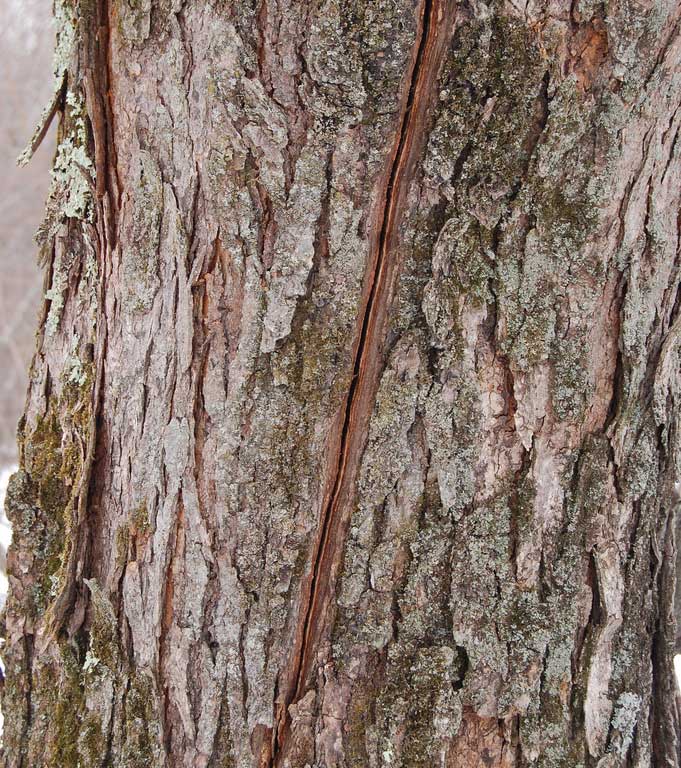Freeze pops: exploding the exploding tree myth

Frost crack on large red maple. Photo: Eli Sagor, Creative Commons, some rights reserved
When temperatures dip well below zero Fahrenheit, especially if they fall precipitously, things pop. Wood siding creaks. Frozen lakes and ponds emit ominous groans, snaps and booms that reverberate through the ice. If soil moisture is high and frost is deep, even the earth can shift in a harmless localized cryoseism, or “frost quake” that produces a nerve-rattling bang.
If you live in a wooded area, you’ve probably heard trees popping and cracking during a deep freeze. It’s an eerie sound on an otherwise still night. Native peoples from northern regions were very familiar with this sound, and some even named a winter month in honor of it. The Lakota call February cannapopa wi, “moon when trees crack from the cold.” The Arapaho consider December the tree-cracking time; for the Abenaki, it’s January.
I once found a reference in a novel to exploding trees. In the book, a lost teen boy survives a northern winter that’s so cold, trees explode into smithereens as if dynamited. I’d lived through winters with minus-40 temperatures but had neither seen nor heard of exploded trees. What did this author know that I didn’t?
After much research, I discovered that fiction is sometimes, well, fictional. As I thought, trees don’t blast themselves to bits. But since that first reference I’ve encountered the exploding-tree myth a number of times. So what does happen when trees go ‘pop’ in the night (or day)?
As we all know, when water freezes, it expands. Some “freeze pops” happen when water that collects between narrow-angle trunk unions freezes.
Luckily, sap is not pure water. It’s endowed with antifreeze in the form of sugars, and to a small extent, dissolved minerals. The more sugar (or any solute) that’s mixed with water, the lower the freezing point becomes. This is due to something known as the “Colligative Property of Solutions,” as you no doubt recall from General Chemistry. (Actually it’s just as well to forget such trivia, which gets in the way of remembering where you put the car keys.)
There comes a point when even sugar-fortified sap will freeze and expand. This can sometimes rupture the bark of a tree, resulting in a visible crack as well as an audible one. In many cases frost cracks close with no long-term ill effects, but sometimes they become perennial. Rarely, a frost crack does send a piece of bark flying. This would tend to happen with a tree like trembling or big-tooth aspen.
Since it’s a weak point, a previous frost crack may pop open again in cold spells. Then each spring and summer the tree makes callus (“repair”) tissue in an attempt to cover the injury, resulting in a raised lip along the seam. Such trees have reduced timber value and an increased potential for decay to set in.
There’s nothing one can do for frost-cracked forest trees in terms of prevention or treatment. You can protect young landscape and fruit trees, however, with light-colored trunk wraps, or even a coat of interior-grade white latex paint, on the lower trunks. Wraps should be removed promptly in spring, and cracks or wounds should never be coated.
In truth, trees do explode occasionally—if someone has placed explosives in them. A friend of mine contracted with the US Forest Service in Oregon in the 1980s to make habitat for cavity-nesting birds. To create snags, he climbed live mature spruces and firs, drilled a hole in the trunk halfway up and inserted dynamite, which he detonated from a safe distance. I’m pretty sure he did this work when it was not below zero.
Paul Hetzler is a horticulture and natural resources educator with Cornell Cooperative Extension of St. Lawrence County








Interesting and don’t forget (who can?) the BOOM that happens when ice on a frozen lake expands, causing a crack on the ice.